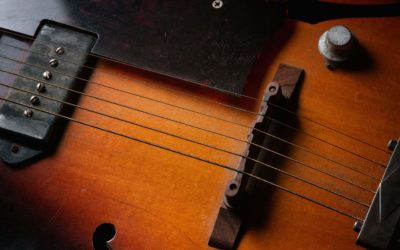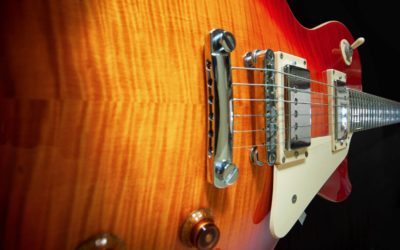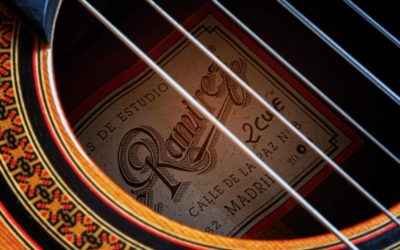Table of Contents
Music As a Language
Over the years I have studied: Italian, French, Spanish and Japanese. However, the only language that I can still speak “fluently” has been Music.
Music can easily be observed as a language, and I often use the similarities as examples when I’m teaching. They both share many of the same concepts and can be helpful when studying the material, especially towards the beginning of your journey.
Elements of Language
Alphabet
The standard English alphabet has 26 letters. I can vividly recall sitting in my elementary school classroom and seeing each of the letters displayed on green cards with white lettering, displayed above the blackboard and around the room. I also remember working in books that had ruled lines for practicing the formation of letters. This was the beginning of a lifetime of learning.
The standard musical alphabet contains only 7 letters, or 12, if you want to include sharps/flats. And while this might appear to be a “limitation”, there is an incredible amount of combinations in which they can be combined, yielding a wide variety of new results.
While languages have vowels and consonants, in music we have consonance and dissonance. Unlike languages, the consonances and dissonances vary depending on the context in which the note is used, whereas in English the vowel/consonant relationship remains constant.
While letters form the smallest element of a spoken language, notes can be considered the same for a musical language.
Triads
While two notes equal an interval, it is the stacking of three notes in which we have our introduction to Triads. Triads are the smallest chordal element in music. These notes can be be combined in various ways to yield different sounds. In English we can take letters and also combine them in numerous ways. For instance, the letters “T”, “E” and “A”, will yield the following words: TEA, EAT, ATE, TAE and ETA, each of which have different meanings.
Triads can be thought of as basic words. For instance, AND, THE, STORE, HOUSE, etc.
Seventh Chords
Seventh chords and other “extended” chords can be considered more advanced vocabulary words. These have more complex meanings and offer a wide range of colors, similar to more advanced words in a language’s vocabulary. Just as there are words that are rarely used, (for instance, when was the last time you used the word “plethora” in a conversation with a friend), yet they are part of your vocabulary, ready to be used in conversation or relatable when reading a passage of text in which they are contained.
Jazz musicians will oftentimes have a much larger chordal vocabulary than other musicians, and thus they will be able to express themselves more precisely than a Rock artist weaned on barre chords.
Dissonance
Dissonance can be considered as profanity and slang. Their abrasive nature causes discomfort to those listening. However, they provide an important point of reference for the consonant/dissonant dichotomy, as their unstable quality helps move the musical idea forward.
Just as there are people who are “foul mouthed” and can’t utter a sentence without using “#*&$*” or ”@!#*”, there are musicians who are so inclined to revel in the use of dissonance as a means of expressing themselves.
Chord Progressions
Chord progressions can be considered a form of sentences. Each chord can be considered a word and the order in which they are connected can be seen as a sentence. These sentences can be of varying lengths.
Just as there are “rules” for connecting words together (nouns, verbs, adjectives, adverbs, etc), chord progressions have their own “rules”, for instance, Functional Harmony. Of course the creative musician will find ways to break the “rules” and come up with new ways of organizing chords, similar to how new “Phrases” are introduced into the English lexicon.
Accents
In the United States of America there are 50 states and many of them have regional accents contained within. Here on Long Island, New York, the words “Long Island”, are pronounced more like “LAWN GUY LAND”. These types of regional accents are also noticeable in music, think: Chicago, Delta, and Texas Blues. These subtle nuances are what makes you either sound authentic, or not.
Punctuation
Just as a “period” ends a sentence, a phrase should have an ending. This is usually done by having the phrase end with a tonic note or chord. Knowing where and when to use a “period” is a basic use of punctuation.
Just as a “comma” introduces a pause in a sentence, so does the use of space in a musical line. Sometimes this may use a certain amount of dissonance (or functional harmony) in order to propel itself forward to the completion of the musical thought.
Just as a “question mark” adds an inflection at the end of a sentence, so does the use of tension at the end of a phrase, thus preparing the listener for the answer to the phrase. Blues artists are masters at this Question and Answer approach.
Paragraphs
Just as a “period” ends a sentence, a phrase should have an ending. This is usually done by having the phrase end with a tonic note or chord. Knowing where and when to use a “period” is a basic use of punctuation.
Just as a “comma” introduces a pause in a sentence, so does the use of space in a musical line. Sometimes this may use a certain amount of dissonance (or functional harmony) in order to propel itself forward to the completion of the musical thought.
Just as a “question mark” adds an inflection at the end of a sentence, so does the use of tension at the end of a phrase, thus preparing the listener for the answer to the phrase. Blues artists are masters at this Question and Answer approach.
Songs
A song can be looked at as a collection of forms, or paragraphs, each of which contain musical words and sentences. We can take this a step further and say that a collection of songs is an album or a story, when compared to a language. Each song tells a short story, just as a collection of paragraphs can do the same.
Feeling/Emotion
Writers use words to invoke certain moods and feelings, a musician organizes notes and chords to do the same. However, unlike a writer who uses actual words, a master musician can invoke the same with just the playing of a song, and not needing lyrics to convey its feeling/meaning. The talent to create in this manner makes a strong statement on the emotional/evocative quality of instrumental music, which is able to transcend cultures and languages throughout the world!
Techniques
Reading
It would be almost impossible to go through life not being to read in your primary language. Therefore, it is also important to be able to read in your musical language. There is a great deal of information that is available to musicians, IF they are able to discern the meaning of the notational elements on the page. Reading can also include “shortcuts” such as TAB for guitar. The ability to recognize notes, rhythms and structure, strengthens your musical foundation and presents a means to learn and “practice” music even without an instrument in hand.
Writing
Surprisingly, writing music is the one discipline that many musicians are negligent in doing, unless they attend a music school. This is due in large part to other parts of the studies dominating their practice schedule, as well as perhaps not needing to do so on a professional level. For instance, Classical musicians are used to reading their parts from a score and have little need for writing their own music. Jazz musicians obtain this ability from transcribing pieces, which is often an obligatory part of their learning process. Besides transcribing, there are few opportunities for learning this important craft, other than taking it as part of a college/university curriculum.
Listening
This is the easiest skillset to practice and yields the greatest results in a “per ratio” context. If you want to learn how to speak a language, it is important to pick up the nuances and accents of the culture speaking it. The same is true for music, especially for something like the Blues, where the articulations, bends, vibratos, etc. are what give the art form its “feel” or learning the amount of “swing” that you adapt in your Jazz playing.
However, it is also important that you learn to listen to what is “important”. It makes little sense to listen to Classical music all day if you are going to play in a Blues band at night. Even within a specific genre it is important to listen to the masters of that art form. I see many of today’s students making the mistake of listening to mp3’s of their favorite artists on their computers and phones, and then when they plug into a guitar amplifier their tone is “weak”, because they never listened to the same material through a good sound system.
If you want to be a good writer, you read books written by the best authors. The same is true for music. Listen to the best and it will “rub off” onto you.
Final Thoughts
Whether you are a student or teacher, it is often to your advantage to think in terms of music being a language. And in the same manner you are able to speak fluently in whatever is your primary language, you can apply those same learning techniques and become fluent in music.





0 Comments